You might think of the miniskirt as just a fashion statement, but its history reveals a deeper narrative of cultural change and female empowerment. Originating from ancient designs, it gained prominence in the 1960s through the influence of key figures like Mary Quant and Twiggy, transforming societal norms in the process. As we explore its evolution, the miniskirt's role in both rebellion and self-expression becomes apparent. What other influences shaped its journey, and how does it continue to resonate in today's fashion landscape?
Historical Origins of the Miniskirt
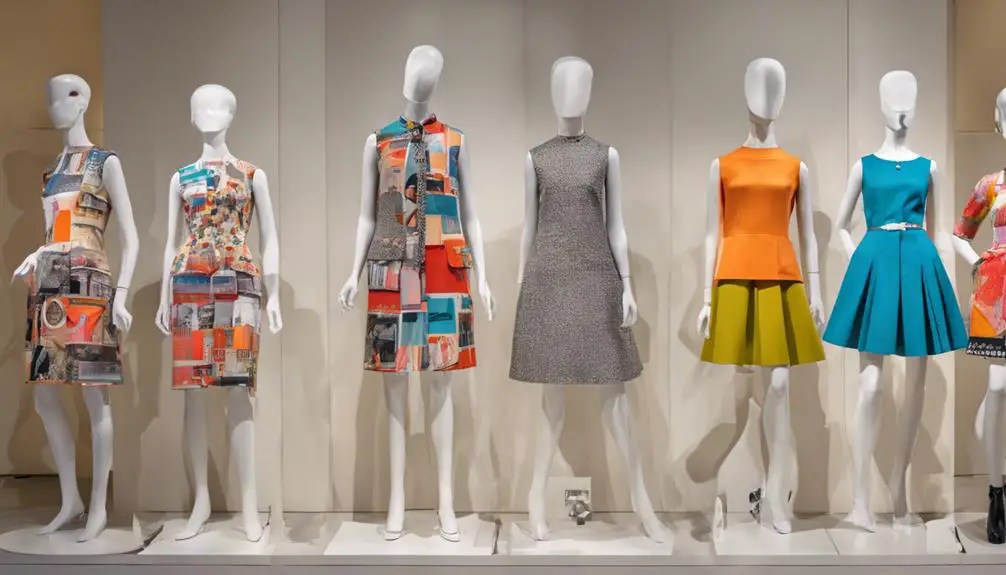
Historically, the miniskirt's roots run deep, with evidence of short garments appearing as far back as 5400-4700 B.C. in ancient figurines and Egyptian frescos. The concept of hemlines has evolved markedly over the centuries, and it's fascinating to see how various cultures embraced short skirts. For instance, during China's Warring States era (476-221 B.C.), men donned skirt-like garments that resemble modern kilts, demonstrating that the allure of shorter styles has long been a part of fashion history.
Fast forward to the 20th century, and you'll find the modern miniskirt beginning to take shape. The 1920s marked a turning point during the flapper era, as women began to push against the restrictions of their clothing, opting for shorter hemlines that symbolized newfound freedom. The term "miniskirt" was popularized by British designer Mary Quant in 1958, who skillfully captured the essence of the emerging London street style. Her designs reflected a vibrant shift from knee-length skirts to daringly short styles, igniting a fashion revolution.
Key Figures in Miniskirt Evolution
The miniskirt's evolution is closely tied to a handful of visionary designers and cultural icons who redefined women's fashion. Mary Quant, the groundbreaking fashion designer, popularized the miniskirt in 1958 through her vibrant boutique, Bazaar, in London. This marked a significant shift in women's fashion, as she challenged traditional hemlines, empowering women to express their individuality. Vintage styles, such as those seen in vintage Ralph Lauren pieces, often echo the daring spirit of the miniskirt by featuring bold designs and unique cuts that celebrate femininity.
In 1964, André Courrèges took the miniskirt to new heights—literally—by showcasing space-age dresses with even higher hemlines in his innovative collection. His futuristic designs pushed the boundaries of what was considered fashionable, inspiring countless designers to follow suit.
Twiggy, an iconic figure of the 1960s, emerged as a symbol of the miniskirt look. With her youthful style and striking appearance, she captivated audiences and influenced fashion trends, embodying the spirit of British fashion during this revolutionary period.
The miniskirt's allure didn't fade away; it continued to inspire designers like Michael Kors, who embraced its aesthetics in his 1988 collection, showcasing its enduring appeal in contemporary fashion. Additionally, Jean Paul Gaultier featured colorful, confetti-decorated miniskirts in his 1979 show, solidifying the garment's place within haute couture.
Through the creativity and vision of these key figures, the miniskirt transformed from a mere trend into a timeless staple, continuing to inspire and evolve in the ever-changing landscape of fashion.
Cultural Impact and Popularization
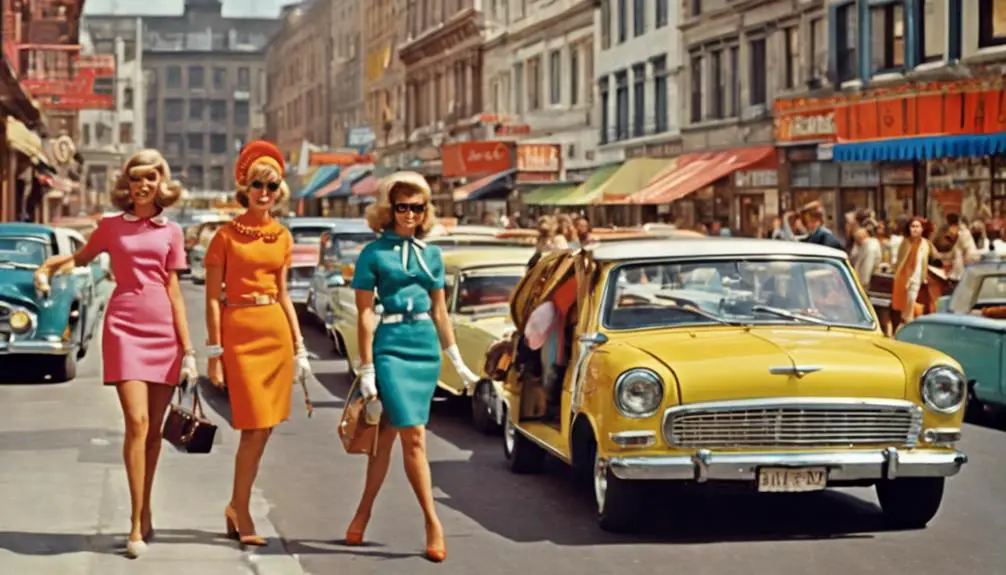
Emerging in the 1960s, the miniskirt quickly became a cultural icon, symbolizing youth and rebellion amidst the changing social landscape. This bold fashion choice aligned seamlessly with the women's liberation movement, challenging traditional norms of femininity and encouraging women to express their independence. Jackie Kennedy's daring decision to don a short Valentino dress for her wedding in 1968 sparked significant discussions, prompting society to reconsider the appropriateness of the miniskirt in high-profile events.
As the years progressed, the miniskirt continued to reshape cultural symbols. Debbie Harry of Blondie rocked the miniskirt during electrifying performances in the 1970s, embedding it deeply within the rock and roll culture of the time. Fast forward to the 1980s, when music icons like Madonna and Cyndi Lauper embraced the miniskirt as a statement piece, furthering its popularization in mainstream fashion. Their vibrant performances and music videos helped solidify the miniskirt as a must-have item for women wanting to express their rebellion and individuality.
In the early 1990s, Julia Roberts made waves by wearing a micro miniskirt in the iconic film "Pretty Woman," influencing fashion trends among working women everywhere. This moment captured the essence of the miniskirt's cultural impact, demonstrating its power to transcend generations and redefine norms. Today, the miniskirt remains a symbol of freedom and self-expression, reminding us of the transformative journey it has taken from the vibrant streets of the 1960s to contemporary wardrobes.
Miniskirts on Fashion Runways
As fashion trends evolve, the miniskirt consistently finds its way back to the runway, capturing designers' imaginations and setting the stage for bold statements. Since its inception in the 1960s, with pioneers like Mary Quant, miniskirts have transformed haute couture, becoming a symbol of youthful rebellion and empowerment. The moment designer André Courrèges showcased space-age dresses featuring higher hemlines in 1964, the miniskirt solidified its place in fashion history, forever changing runway shows.
Throughout the decades, fashion designers have embraced the miniskirt, ensuring its relevance. In 1979, Jean Paul Gaultier's show captivated audiences with colorful, confetti-decorated miniskirts, echoing the playful aesthetics of that era. The 1980s saw American designers, like Perry Ellis, elevate the miniskirt to high fashion, pairing it with preppy styles that resonated with the contemporary audience.
Fast forward to the present, and you'll see the miniskirt making waves again, thanks to influential designers like Hedi Slimane and Tom Ford, who highlighted this timeless piece during their tenures at Saint Laurent. Miu Miu's spring 2022 collection featured a viral micro miniskirt, proving that the miniskirt's allure is far from fading, as it now commands a resale value of around $2,000.
With each runway show, the miniskirt continues to redefine fashion trends, embodying a spirit of daring creativity and style that excites both designers and fashion enthusiasts alike.
Modern Miniskirt Trends
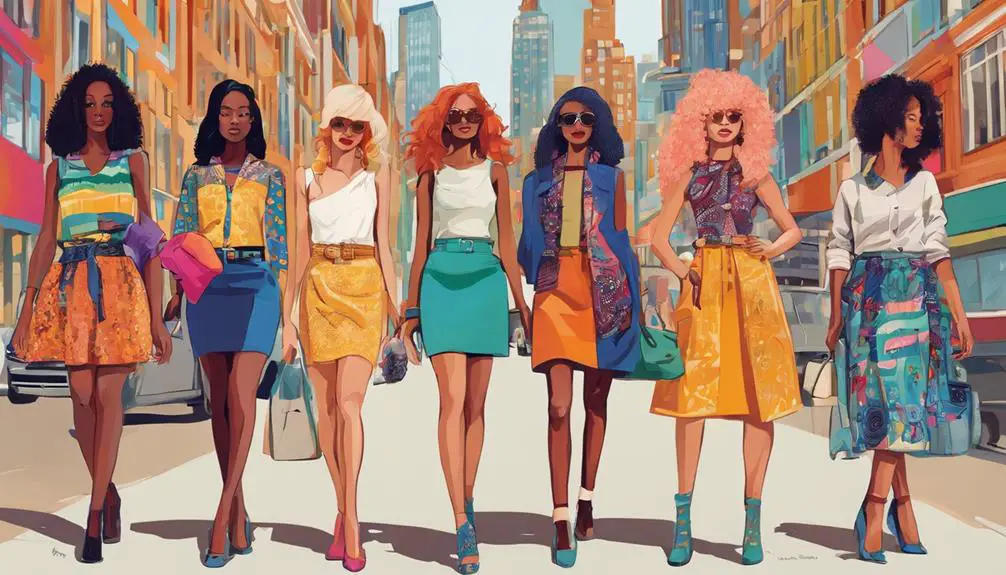
Miniskirt trends today showcase a vibrant blend of nostalgia and innovation, enchanting fashion enthusiasts with fresh designs and bold statements. As you explore modern fashion, you'll notice how the miniskirt remains a staple in women's wardrobes, evolving with contemporary trends while paying homage to 1960s styles. Designers like Miu Miu have taken the micro-miniskirt to new heights, creating pieces that not only capture attention but also spark excitement, as seen in their viral spring 2022 collection, which sold for around $2,000 in the resale market.
High fashion continues to embrace the miniskirt, with collections from Hedi Slimane at Saint Laurent emphasizing its importance from 2012 to 2016. This highlights the ongoing relevance of the miniskirt, which now reflects values of inclusivity and sustainability in design. Brands such as Diesel are reviving provocative styles while appealing to modern sensibilities, ensuring that these skirts resonate with a diverse audience.
Fashion magazines frequently spotlight mini skirts, celebrating the versatility and boldness they add to any outfit. Whether you prefer a classic silhouette or an adventurous micro-miniskirt, there's something for everyone in today's fashion landscape. These trends invite you to step out of your comfort zone, experiment, and express your individuality. So, as you curate your wardrobe, remember that the miniskirt isn't just a piece of clothing—it's a statement of style and confidence that continues to inspire.
Design Characteristics of Miniskirts
Fabrics played a vital role in these iconic designs; wool jersey was a popular choice because it provided comfort and energy, standing in stark contrast to the restrictive high-heeled fashions of the previous decade. As you explore the vibrant world of miniskirts, you'll notice an array of bright colors and geometric patterns that reflect the era's spirit. Renowned designer Mary Quant was pivotal in this movement, crafting miniskirts that featured playful details like Peter Pan collars and patch pockets, all aimed at creating that quintessential youthful look.
Moreover, the comfortable silhouettes allowed for free movement, aligning perfectly with the casual lifestyle embraced by young women in the 1960s. As a result, the miniskirt not only became a fashion statement but also a symbol of liberation, showcasing how clothing can embody the desires and aspirations of a generation while remaining effortlessly stylish.
Legacy and Ongoing Influence
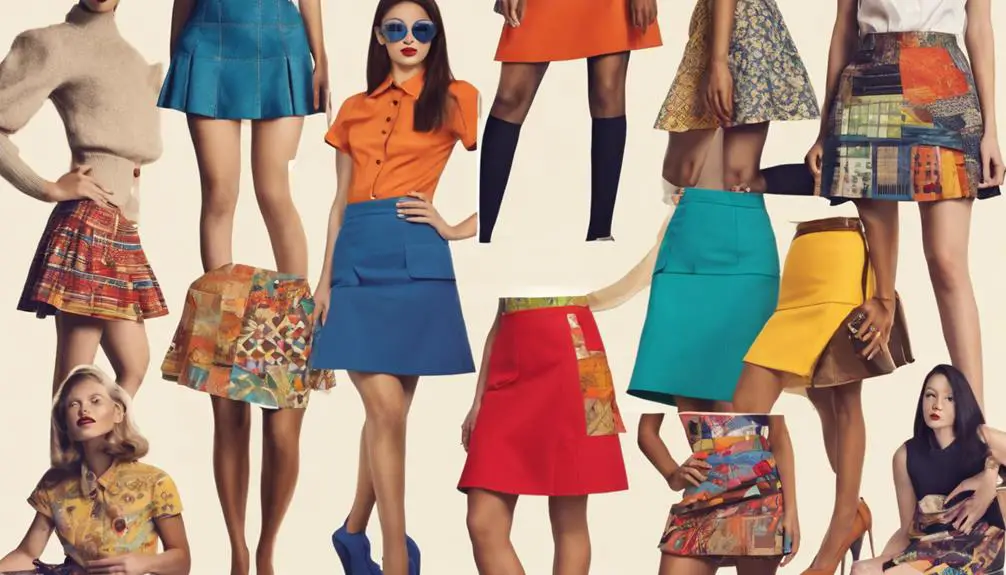
The legacy of the miniskirt resonates deeply in today's fashion landscape, serving as a powerful symbol of women's liberation and evolving societal norms. Emerging from the 1960s fashion revolution, it's become a cultural icon that reflects the spirit of independence and self-expression. Contemporary designers, like Miu Miu and Diesel, have embraced this legacy by showcasing micro-minis in their collections, evoking the original provocative styles that first captivated audiences.
In 2009, the miniskirt's historical significance was recognized when it appeared on Royal Mail stamps, cementing its role in British fashion culture. Today, modern celebrities such as Nicole Kidman and Hailey Bieber continue to embrace and popularize the miniskirt, demonstrating its enduring presence in contemporary wardrobes.
Moreover, the ongoing influence of the miniskirt extends beyond aesthetics; it plays a significant role in discussions around body positivity and inclusivity. As fashion evolves, the miniskirt adapts to contemporary standards, encouraging individuals to express themselves freely, regardless of body type. The current shift towards sustainable fashion practices also highlights the miniskirt's versatility, as it can be crafted from eco-friendly materials while still celebrating style and comfort.
This iconic piece not only embodies a rich history but also inspires future generations to challenge norms, embrace diversity, and celebrate individuality. The miniskirt is more than just a garment; it's a reflection of progress, creativity, and the ongoing journey toward empowerment through fashion.
Frequently Asked Questions
What Was the Purpose of the Mini Skirt?
The miniskirt's purpose was to challenge social norms, embody youth rebellion, and promote personal expression. Its designer influence and celebrity endorsement sparked global trends, marking a significant evolution in fashion and supporting the feminist movement's ideals.
What Does the Mini Skirt Symbolize?
When you think of fashion evolution, the miniskirt's cultural significance stands out. It embodies youth rebellion, feminist movement, and sexual liberation, challenging societal norms while showcasing designer influence and pop culture's role in personal expression and body positivity.
Why Was the Mini Skirt Controversial?
The mini skirt sparked cultural backlash due to its challenge to social norms. It embodied fashion rebellion, influenced youth identity, and reflected feminist movements, while media portrayals and celebrity influence intensified debates on gender expression and sexual liberation.
Who Made the Mini Skirt Famous?
When it comes to making the mini skirt famous, you can't ignore Mary Quant. She sparked a 1960s rebellion, influencing fashion icons and runway trends, creating iconic styles that empowered youth culture through celebrity endorsements and global impact.



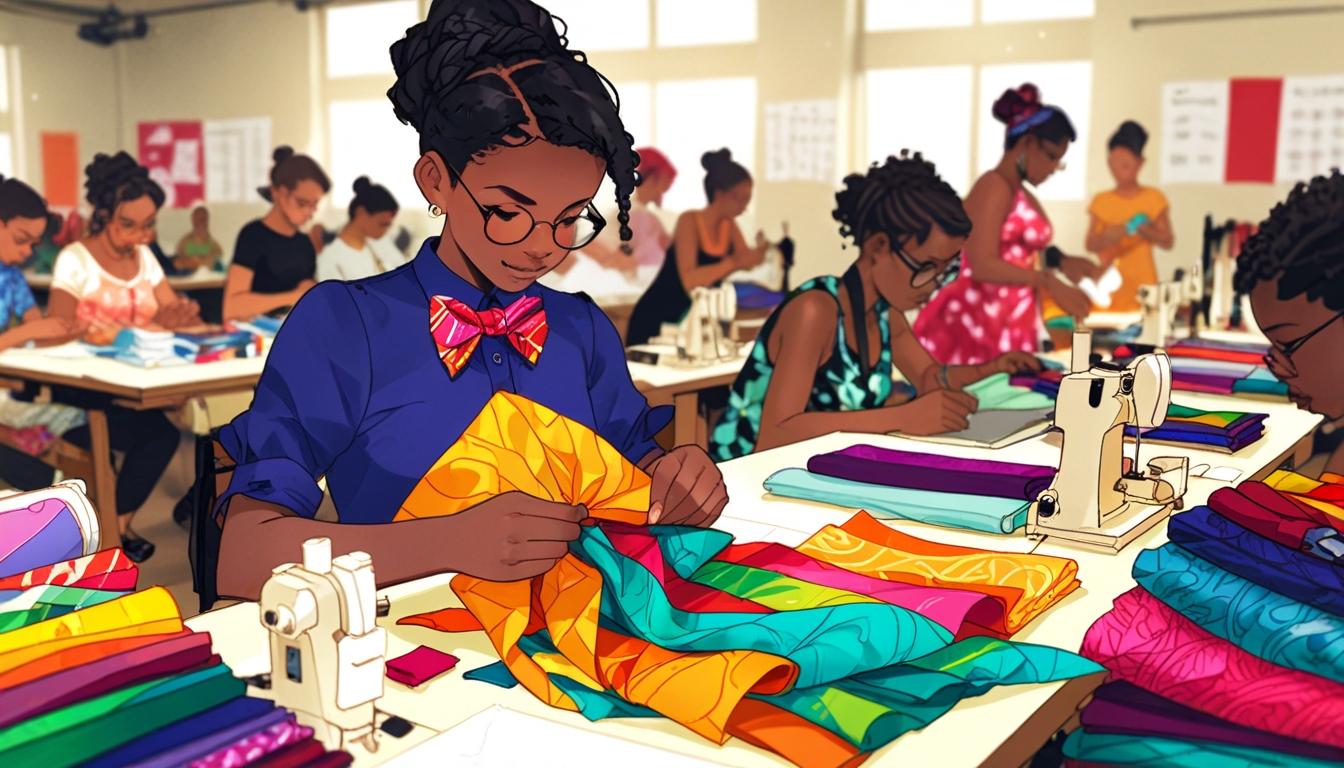
Rattling clean web site, thankyou for this post.